Finbar 247 – Artist
Finbar 247 has been working as a graphic and graffiti artist for over a decade, and recently returned to Galway from travelling on a mission to bring his art to the streets of the city.
More from...
How did you get to where you are?
I studied graphic design in Limerick, after I left Galway at 18. I love travelling, so every summer, I was off on adventures. I travelled all over Eastern Europe, Egypt, which was great and I got there before a lot of change happened. Every time I get an opportunity, I travel. I lived in a campervan with a mathematician and an engineer; we travelled around Europe, and then I lived in Berlin. I love Berlin; there's everything going on and you can live such different lifestyles there. It's quite a spectacular space, so I think coming back from an environment like that, I really wanted to bring some of it back to Galway.
What were you doing while you were away?
We were busking. The mathematician, David Owens, worked for Cisco. He gave up his job to play music and he's still travelling the world just playing music and doing phenomenally well. Then Dara Finneran was a biomedical engineer and gave it up to do juggling - he works as an artist / engineer now. And I went to do graffiti. We all did different things. I drew people's names in graffiti and created live art on the street, which has kind of been done in some ways before, but not with graffiti. David did his own music and Dara did juggling shows, so we were a real trio of madness going around. We had a lovely camper van and we just hit cities and had fun. We met lots of other buskers doing interesting stuff and it really opened up a different world to us. Busking is amazing and so many things can be done that people don't realise - it really does add a lot to the city. It's competitive too, so we had to learn to play hardball. In Paris, we were run out of there by the busking mafia - we were quite good at what we were doing, and doing it for the right reasons, so once they realised how well we were doing then they wanted to be friends with us to figure out our methods, so it came full circle. Paris was one place that was interesting. I used to sit outside the Pompidou Museum just doing art all day and meeting the most interesting characters - designers, psychologists, all types of people all wondering what I was doing. I would do sketches for them and I'd receive tips; I was making a healthy living. I came back to Galway with that in mind in 2014. I came back on a mission to turn the city of the arts into the city of the arts outside as well. There's so much beautiful stuff here - I wanted to add to it in areas maybe that had been overlooked - like the grimier walls.
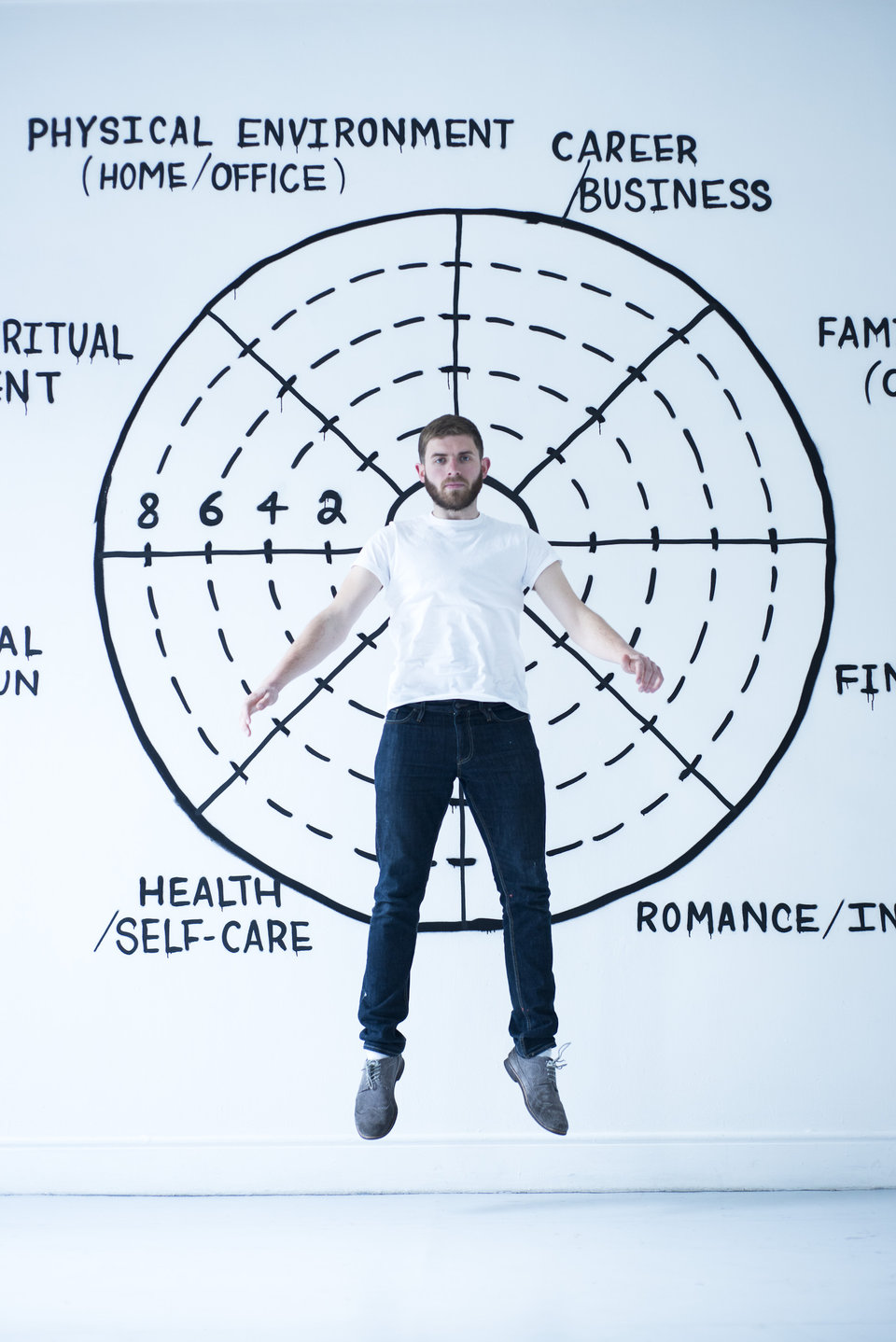
A lot of your work is graffiti style - is that your signature style?
I would describe myself as an artist. I've painted graffiti for over a decade and I've learnt an awful lot of skills through that, so realising bigger projects isn't a problem for me anymore. The scale of something now is just exciting, so the bigger the better and I love the opportunity to go big. That side of me grew through graffiti and then graphic design really gave me a basis in conceptual work and interaction - how you deal with people. I would say an interest in painting, graffiti and concept has kind of led to what I'm doing at the minute.
Graffiti has traditionally been seen as something negative. Are you up against any of that still or have people moved on from there?
Yes, definitely. Graffiti is always going to be used as a term of negativity in some aspects and I suppose if I had the time to sit down with every individual and explain the kind of ins and outs of a graffiti culture and subculture of the art, they might have a different view on it after that. In all honesty, it's not easy to change the perception of something like that, but hopefully, with the kind of work I'm doing at the moment, I can show people that it can really be an artform that stands out in a positive light. So, yes, yes, I've had my run-ins (laughs), but ah, hopefully now I can use my skills to create nice things for the city.

Is there a main theme running through a lot of your work that's really important to you?
I think I struggled with what I was doing for a long time. Graffiti is a very nerdy culture. If you can imagine someone sitting down at a table drawing letters for hours - it's quite a lot of work and most people wouldn't be able to relate to it, but when I painted, I always loved the interaction with environment. So if there was ever a wall that had a hole in it or had a bit of it missing, I'd always look at it and think, 'Ooh, I could play with that', whereas most people would like just the blank canvas that they could put their piece on. For me, interaction and playfulness definitely came through and a lot of the stuff I do is quite colourful. I think it's an extension of your personality. I'd be very optimistic and social and the work I seem to be doing would lead itself in that direction too.
How would you describe yourself?
I would always say the things I love most are painting, creating, travelling and people. My social skills might be even better than my painting skills. I just really enjoy that interaction with people and I think that's where a lot of interesting stuff happens. So collaboration for me is very exciting, and to be able to share that with other people - that's one of my personality traits that I think is quite strong. In general, I'm eternally optimistic. That mightn't always do me good. I just think it'll always be great and work out and it usually does. I'm very lucky. I laugh - my family call me a black cat. I'm surprised at how things work out, but then I'm not surprised either. Opportunities always arise and I just go, ‘that's fantastic', and then I just keep going with it. I get caught up in detail. I like the fine details in life - even taking moments, like when you see nature, trees, when the leaves rustle in the wind. I see all those things all the time and I have a real appreciation for life in that sense, the small things.
Have you always been a very positive person?
I've always been optimistic and happy. I do feel I'm lucky. I have friends who don't see things in such a nice light as I do. I can relate to them and understand they don't see it that way and I would always hope to be able to share the way I see things with them so that maybe I could make their day a bit better. Maybe that's something that comes through in my work - trying to share my optimism with other people.
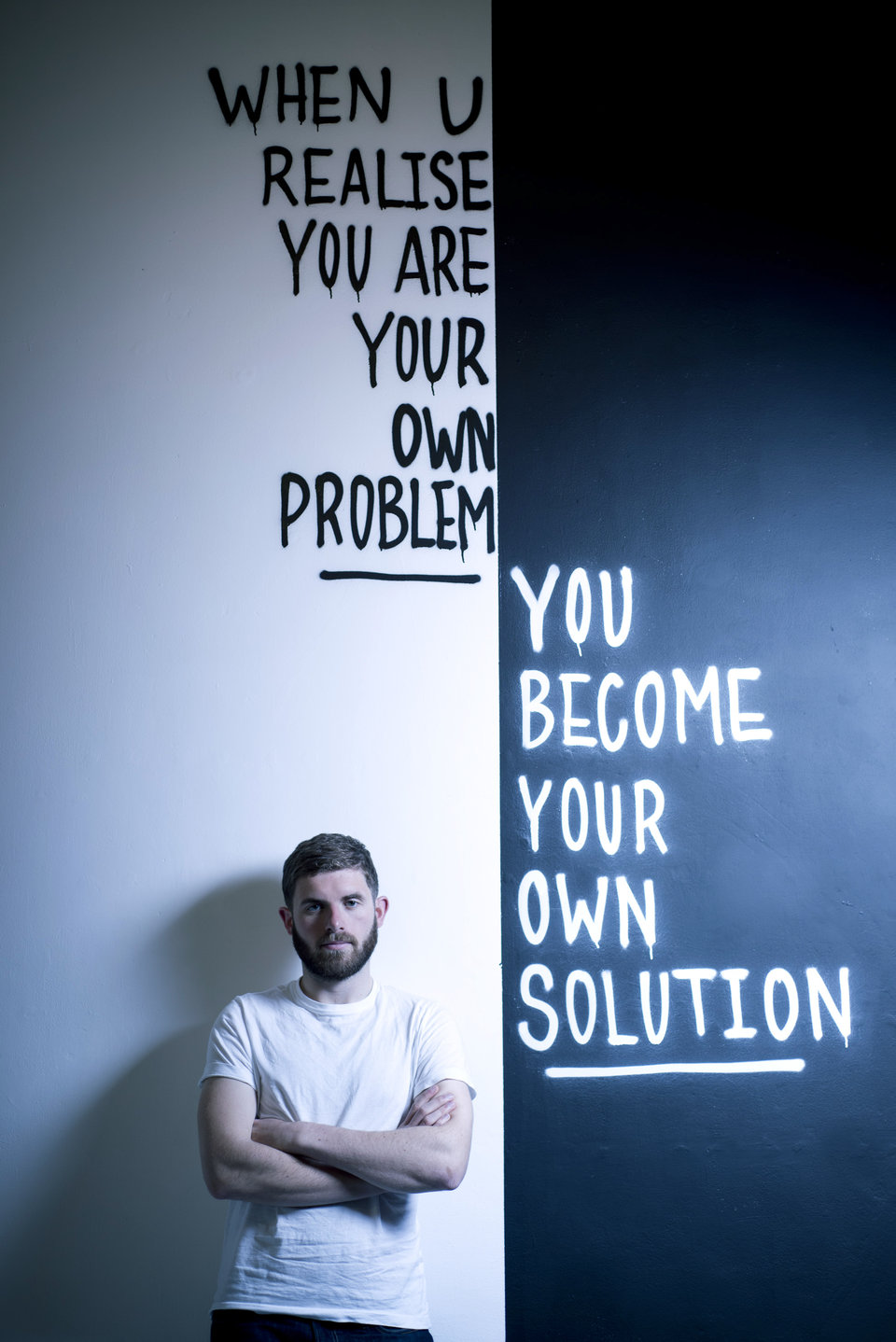
How have you found things since you've come home. How has the reception been to your work?
Amazing. There's a lot of change coming. There seems to be a new wave of energy in the city and as much as I like to travel, I felt the draw back to Galway and I think a lot of people do. Anyone who leaves Galway will always feel a pull back to want to do something for such an great city. I have a lot of friends in different areas. I've worked in different areas - a friend of mine, Pat Divilly, does fitness and mindset - we went to school together. He's very optimistic and positive. I don't know if it's something about our age group - I'm surrounded by people that aren't fazed by things. They think, ‘Why not? Why can't we do amazing stuff?'. I would work with lots of different people in lots of different areas and everyone I meet seems to be on a mission to do something for the city at the moment, which is fantastic to see. It all seems to be becoming more entwined like a web. For the Galway 2020 bid, all this stuff is really just going to expand and blossom as time goes by. Getting back to Galway, I wasn't sure what I was doing, I just knew I had to come home and start doing stuff and I started painting. I was out on the street busking and meeting people and then opportunities just started arising and I've just been working away since.
Have you ever been involved in the underground graffiti scene?
Yeah, graffiti subculture is a lot more connected than people realise. You could go anywhere in the world if you're painting and if you have a reputation you just connect with the people who are painting at a high level in that city. It's very social and then there's a lot of underground stuff that people wouldn't know about. You could literally fly to Oslo and go into the local paint shop and if they know who you are, they go, ‘Oh, you should meet this person', and suddenly you have a bed to sleep in and you go and paint. It's very nice in that sense - you get a real insight into a city pretty quickly on a personal level. I've travelled a lot and I've gotten into lots of sticky situations, but Galway's very small and it doesn't have as much of an urban kind of feel, it's smaller and more tightly knit so anything that goes on, everyone knows about.
So you wouldn't get away with it...Is that part of the excitement of that kind of a culture if you're in a bigger city?
In Berlin, there was more graffiti on the front door of my apartment than the whole of Galway City. To see such human impact on a city is very interesting. Berlin wouldn't be the city it is without it. If that were to happen on one street in Galway, people would be horrified, but in Berlin, that much energy being put into it made it feel like a homely place; it reminded you that people were there - that they are alive. I think every city has its own identity and for certain cities, that's a really big part of it. It really makes you feel alive in the city.
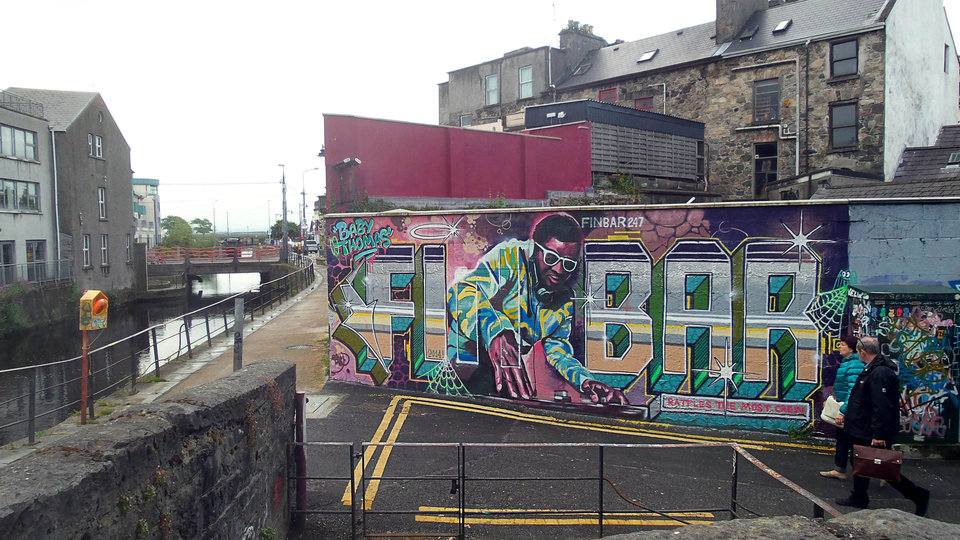
How does art and culture influence your daily life?
I suppose I never stop thinking. That is my life, and everything is connected around that. As soon as I get up in the morning, I'm thinking about things and planning projects and all of my friends are related to it in certain ways. Even my friends that wouldn't be artistic are looking at walls and going, ‘Oh, you could paint that'. So as time goes on, I definitely seem to be on more and more of a path of creating and everyone I meet seems to be doing something along the same lines and we just collaborate. It's very exciting.
What drives you?
I suppose it doesn't even feel like a drive, it just feels like something I'm supposed to be doing. I don't know what else I would be doing, it's just the way I think life is. Things that give me inspiration are people and travelling and my observations, and communicating that and sharing it with other people is what gives me satisfaction. When I realise a project and it has a positive effect, then I feel good that I'm doing what I'm meant to be doing. As the audience I'm reaching is getting bigger, the more opportunities that arise, and it's snowballing. I think the drive is that it keeps gaining momentum and I love it.
Who or what as been your greatest influence?
They come from all different aspects of life - my family network - my mum has always been a supporter of what I do, even when it's been thrown on her doorstep and causing her trouble. To have that constant belief is inspiring - to know that someone understands that it's something you need to do and to be able to keep giving you the chance to do it. My friends always share their experiences with me and that leads to different thoughts on how you view the world. To have interesting people around you all the time always leads to interesting possibilities - they say you are the sum of the five people around you at all times. Going to art college, you have great friends doing amazing work. Graffiti as a culture, you're all growing so you have a graffiti crew. To share your art with people at a level that it's open to critique is a very personal thing and when you paint grafitti you learn to take that on board quite easily and not be so precious about what you do.
How?
As it's quite a competitive sport nearly, you get used to taking hard knocks and that helps you realise why you're doing things and not question yourself so much. Ten years ago I would have been more precious about my work and if it were to disappear or be slated, I would have been upset by that. Now I realise that everything that you do is having an effect on your surroundings, and people's interactions with that are their own and that nothing will last forever, so keep doing.
Do you work on instinct or do you think things through?
Both I would say. I'd say I'm very much a person who listens to my gut. I feel like you're given a kick and you always inherently know if you're doing the right thing or the wrong thing. Instinct very much plays a big part in what I do and I love reacting to stuff and I find through my reactions that great things always happen.
"I think poetry is very interesting in terms of how people can relate to it on a personal level - they take from it what they're dealing with in life and I think paintings do that too. So to try to visualise poetry in the same manner was very exciting and a nice challenge."
Can you tell us about what you've been working on?
The most recent work I did was the large walls for Cuirt, which I collaborated with Dani Gill on. What she wanted to do and what I wanted to do were very similar, but we needed each other to realise the idea. She wanted to share poetry and I wanted to share artwork. It couldn't have been a better collaboration for what we were trying to do. I think poetry is very interesting in terms of how people can relate to it on a personal level - they take from it what they're dealing with in life and I think paintings do that too. So to try to visualise poetry in the same manner was very exciting and a nice challenge.
Another project I'm working on is Gates of Galway. It's about taking things that people wouldn't expect to see art on and turning those into pieces of art that the community can enjoy and interact with. One of the gates is down Raleigh Row. Raleigh Row used to be the main road in from Connemara and it also used to be known as Shell Lane. It used to be the main road in and the sea used to come up to the back of the houses (at Sea Road) behind it, so I took a little gate that needed to be scraped back and I've painted an image of Salthill and the seaside. It's almost like looking through a window of what used to be there and it's become a real talking point within the community. The idea of creating something for the city that can really change the energy of an area is really nice.
I'm also in talks about creating an installation within the hospital about mindfulness and gratitude for Mental Health Week. We've looked at the footfall and 4,000 people go to work there every day to help patients in the hospital. There's so much good going on in there. So the idea is that we would create an experience so that when people are coming in, they can take a moment to focus on themselves and maybe have a positive experience and share that with the people they're going to visit or work with. The opportunity to work with such a large audience and to be given the chance to try to make that a better experience to people - that's really exciting.
Ireland has gone through alot and I suppose you can see it even in Galway, empty units that were empty for years are suddenly starting to fill up, and there's that change where people are going, ‘Oh, we don't have to be sad about this'. We've worked our way through all of the hard stuff and now it's time to rebuild the city and rebuild everyone personally and I think installations and exhibitions like this will help people to focus on their lives and start achieving what they want from it.
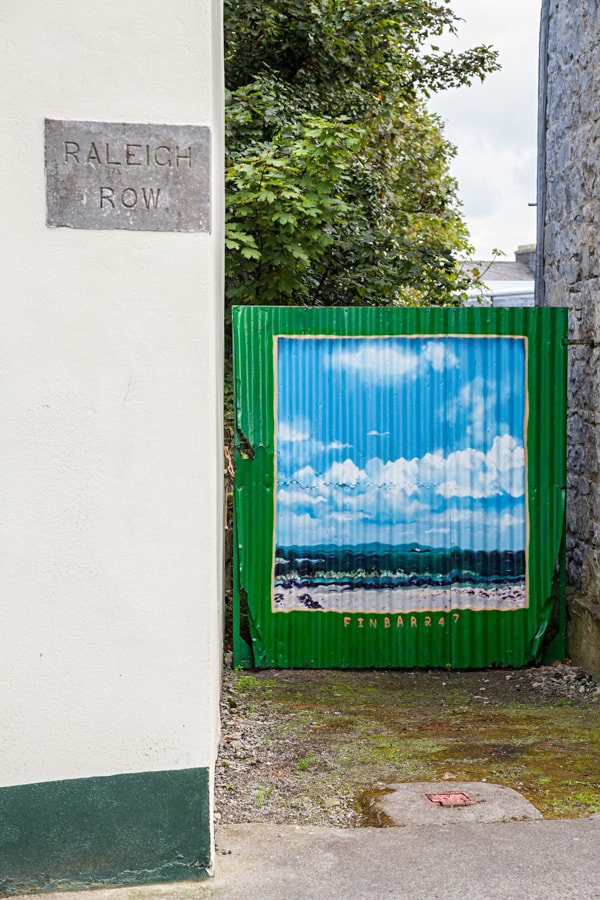
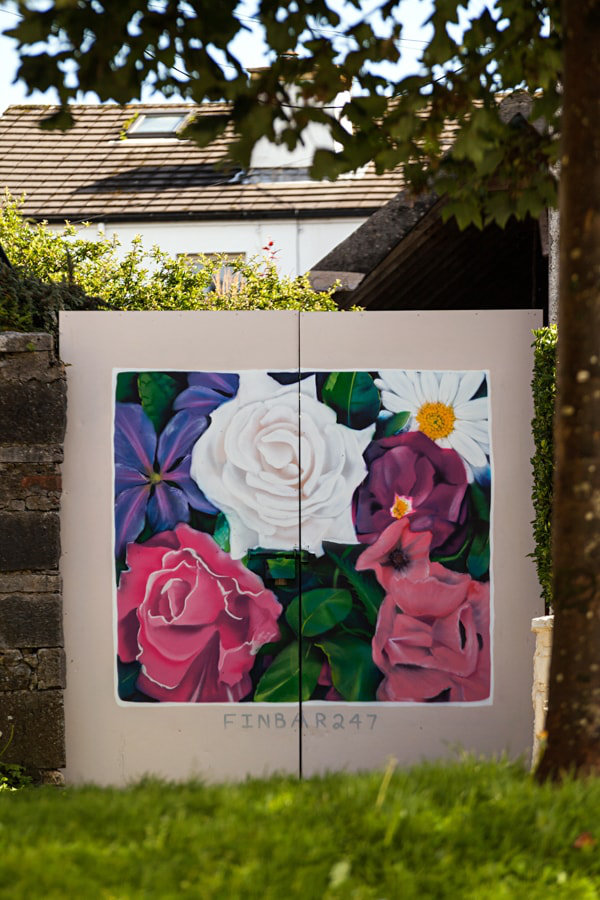
Where is your favourite cultural city or place?
Living in Berlin has had a huge influence on my life. There's such a large contrast between East and West and the idea of no rules versus rules and how one city can have two such strong identities. You could go there and you can go wild and you can party or you can go there and you can really create and work. Everything is so cheap; it's cheaper to live there than it is in Galway. Food is out of this world and to eat a beautiful meal out every day would be the cost of eating at home, so to see that a place can actually work like that is quite eye-opening. I love Paris - I think there's so much going on there. France has a great respect for art and they realise what an impact it has on their culture. Working and travelling through France, I really saw how much good art can do, and clearly artists are needed within a community to inspire people and brighten up people's days. They're two places that I love. There are so many other places I want to go and see, and I'm sure they'll all lead to new views of the world. A friend has invited me to travel around Scandinavia for a little while to meet design houses. I think Scandinavian design and function is very much part of their life there and it would be very interesting to learn about that and bring that back to Galway. I would love to travel to Asia, and learn from other cultures and then bring back the positives from their work and bring it to share with Galway.
"We've worked our way through all of the hard stuff and now it's time to rebuild the city and rebuild everyone personally and I think installations and exhibitions like this will help people to focus on their lives and start achieving what they want from it"
What impact do you see culture having on Galway City?
It's like a place where you can nurture ideas and watch them blossom, a lot of people come here to start. It really is like a greenhouse. If all of the artistic and creative people in Galway start to plant their seeds now, they're just going to grow. The next five years will be very interesting. I don't know if anyone will really be able to envisage what's possible. I have my ideas about the impact I'd like to make and that's very much community and art. It'll be very interesting to see how things like technology effect that, and what's possible and how we can relate to other cities within Europe. In Ireland, Galway has a nice balance between city and community and the changes to come will just be great.
You're talking about possibilities - what would your vision of a cultural utopia for Galway be?
To embrace everything that we have on offer here and to let that grow. The food here is beautiful - people come here to wine and dine and socialise. The streets are a perfect size to meet on and enjoy people's company without feeling too dispersed. Everything seems to be growing from the heart of the city and it will only get bigger and bigger. With all the different areas - literature, art - everyone's trying new things. Fear has been eradicated, the idea of possibility has opened up and with that, exciting things always happen. So instead of saying you can't do that, it's how can we do that, and I think with that attitude, a lot of new doors are going to open. If everyone in their area breaks down the boundaries of what seems possible then it's only going to invite more people in to try and do better things for the city. If I can paint large walls around the city, then there's no reason we couldn't bring amazing artists into the city to share their work with the people of Galway as well. Hopefully if everyone does their bit, it will just open up all the doors and the city will just have a huge influx of design and art and culture.
- Jess Murphy - Previous
- Next - Garry Hynes